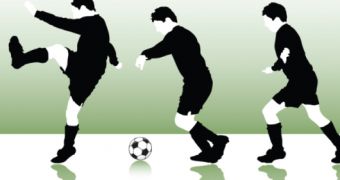Amyotrophic lateral sclerosis (ALS) – or Lou Gehrig's disease – is a progressive, neurodegenerative disease, which causes sufferers to lose control of voluntary muscular movement. By affecting the central nervous system, especially motor neurons, the condition virtually traps people inside their own bodies, allowing them to keep control only of their eye muscles.
The causes for ALS have not yet been determined, but the disease has been associated to a higher degree with professional athletes. For example, since 173, more than 41 Italian soccer players died because of this condition. And while ALS was first thought to be generated by pesticides being sprayed on the field, this hypothesis was quickly dismissed, because other countries with pro soccer players, such as Spain and France, reported no cases of Gehrig's disease among their athletes.
Sheffield Care and Research Centre for Motor Neuron Disorders, Pam Shaw, says "It's my feeling that this has come to light in football players because they have a higher profile. But in my clinic I've seen many patients that were very active cyclists, swimmers and tennis players too." She adds that future studies are also required to obtain relevant data as to how the disease occurs. Reported cases indicate that it can affect people in the same team, as well as individual athletes, competing in different sports.
This prompted scientists to believe that ALS could have something to do with genetic mutations that render individual cells unable to respond to stimuli coming from motor neurons. As the muscle cells lose their elasticity, as well as their abilities to accommodate multiple impulses, generated by prolonged physical exercises, they eventually degrade and become stiff.
"In some people, the cells can't mount the stress response associated with the increased firing of neurones, so they are gradually damaged," says Shaw. Therefore, screenings to ensure that an individual is not predisposed to developing this disease should be made compulsory for professional athletes.

 14 DAY TRIAL //
14 DAY TRIAL //